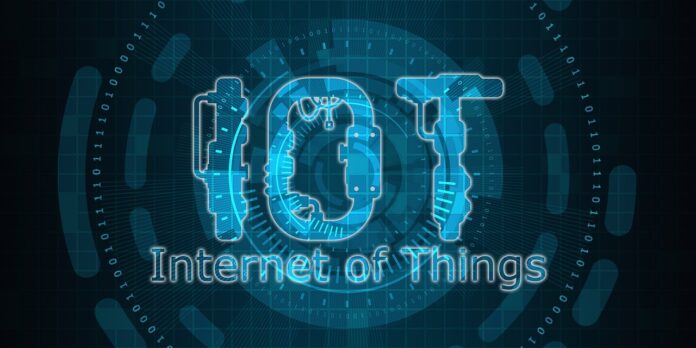What is IoT? Understanding the Internet of Things Revolution
The Internet of Things (IoT) represents a revolutionary network of interconnected physical devices that communicate and exchange data without human intervention. From smart home devices to industrial sensors, IoT technology is transforming how we interact with the digital world.
IoT Definition and Core Concepts
IoT refers to the vast network of physical objects embedded with sensors, software, and connectivity technologies that enable them to collect and transmit data over the internet. These smart devices range from everyday household items like smart thermostats to sophisticated industrial equipment used in manufacturing.
How Does IoT Work? Key Components and Technologies
Essential IoT Technologies
Sensor Technology
- Temperature, humidity, and motion sensors
- Light and proximity detection
- Environmental monitoring capabilities
- Real-time data collection
IoT Connectivity Solutions
- Wi-Fi and Bluetooth for short-range communication
- 5G cellular networks for long-distance connectivity
- LPWAN (Low Power Wide Area Networks) for large-scale deployments
- Zigbee and LoRaWAN protocols
Edge Computing and Cloud Integration
- Local data processing reduces latency
- Cloud storage enables remote access
- Hybrid edge-cloud architectures optimize performance
AI and Machine Learning Integration
- Predictive analytics capabilities
- Automated decision-making
- Pattern recognition and anomaly detection
IoT Applications: Real-World Use Cases Across Industries
Smart Home IoT Devices
Popular Consumer IoT Applications:
- Smart thermostats for energy efficiency
- Connected security systems and cameras
- Voice-controlled lighting and appliances
- Smart door locks and garage openers
Industrial IoT (IIoT) Solutions
Manufacturing and Industry 4.0:
- Predictive maintenance systems
- Process automation and optimization
- Quality control monitoring
- Supply chain tracking
Smart Agriculture:
- Soil moisture sensors
- Automated irrigation systems
- Livestock monitoring
- Crop health assessment
Smart City Infrastructure
Urban IoT Implementation:
- Intelligent traffic management systems
- Smart parking solutions
- Environmental monitoring networks
- Connected public transportation
Smart Grid Technology:
- Energy consumption optimization
- Renewable energy integration
- Real-time grid monitoring
- Demand response systems
Connected Vehicle Technology
Automotive IoT Features:
- Vehicle-to-vehicle (V2V) communication
- Autonomous driving capabilities
- Fleet management systems
- Predictive maintenance alerts
IoT Benefits: Why Businesses Choose Smart Connected Solutions
Enhanced Operational Efficiency
IoT devices provide real-time monitoring and automation, reducing manual intervention and improving operational efficiency by up to 30% in many industries.
Data-Driven Decision Making
Smart sensors collect valuable data that enables businesses to make informed decisions, optimize processes, and identify new revenue opportunities.
Cost Reduction and Energy Savings
IoT-enabled energy management systems can reduce energy consumption by 20-30%, leading to significant cost savings for businesses and consumers.
Improved Customer Experience
Connected devices enable personalized services, predictive maintenance, and enhanced user experiences across various touchpoints.
IoT Challenges: Security, Privacy, and Implementation Concerns
IoT Security Risks and Solutions
Common Security Threats:
- Device vulnerabilities and unauthorized access
- Data breaches and privacy violations
- Network security weaknesses
- Lack of encryption standards
IoT Security Best Practices:
- Regular firmware updates
- Strong authentication protocols
- End-to-end encryption
- Network segmentation
Implementation Challenges
Technical Barriers:
- Interoperability issues between devices
- Scalability concerns for large deployments
- Integration complexity with existing systems
- Bandwidth and connectivity limitations
Economic Considerations:
- High initial implementation costs
- Ongoing maintenance and support expenses
- ROI measurement challenges
- Skills gap in IoT expertise
IoT Market Trends and Statistics 2025
Current IoT Market Data
- Global IoT market projected to reach $1.1 trillion by 2025
- Over 75 billion connected devices expected by 2025
- Industrial IoT represents 40% of total IoT investment
- Consumer IoT growing at 25% annually
Emerging IoT Trends
5G and IoT Integration:
- Ultra-low latency communication
- Massive device connectivity
- Enhanced mobile broadband
- Network slicing capabilities
AI-Powered IoT Systems:
- Intelligent automation
- Predictive analytics
- Natural language processing
- Computer vision integration
Edge Computing Adoption:
- Reduced cloud dependency
- Faster response times
- Improved data privacy
- Lower bandwidth costs
Future of IoT: What to Expect in the Next Decade
Next-Generation IoT Applications
Smart Everything Revolution:
- Fully connected smart cities
- Autonomous industrial facilities
- Integrated healthcare ecosystems
- Sustainable environmental monitoring
Advanced IoT Capabilities:
- Self-healing systems
- Quantum-secure communications
- Biometric integration
- Augmented reality interfaces
IoT Standardization and Interoperability
Industry Standards Development:
- Universal connectivity protocols
- Standardized security frameworks
- Interoperable device ecosystems
- Regulatory compliance guidelines
Getting Started with IoT: Implementation Guide
IoT Strategy Development
Planning Phase:
- Define business objectives and use cases
- Assess current infrastructure capabilities
- Identify required technologies and partners
- Develop implementation timeline and budget
Pilot Project Approach:
- Start with small-scale proof of concept
- Measure results and gather feedback
- Scale successful implementations
- Iterate and improve based on data
Choosing IoT Solutions
Vendor Selection Criteria:
- Security and compliance capabilities
- Scalability and flexibility
- Integration possibilities
- Support and maintenance services
Technology Stack Considerations:
- Device compatibility
- Connectivity requirements
- Data processing needs
- Analytics and reporting capabilities
Conclusion: Embracing the IoT Revolution
The Internet of Things represents a fundamental shift in how we interact with technology and data. From smart homes to industrial automation, IoT is creating unprecedented opportunities for efficiency, innovation, and growth. Success in the IoT era requires understanding the technology, addressing security challenges, and developing comprehensive implementation strategies.
Organizations that embrace IoT today will be better positioned to compete in the increasingly connected world of tomorrow. The key is to start with clear objectives, prioritize security, and build scalable solutions that can evolve with emerging technologies.



